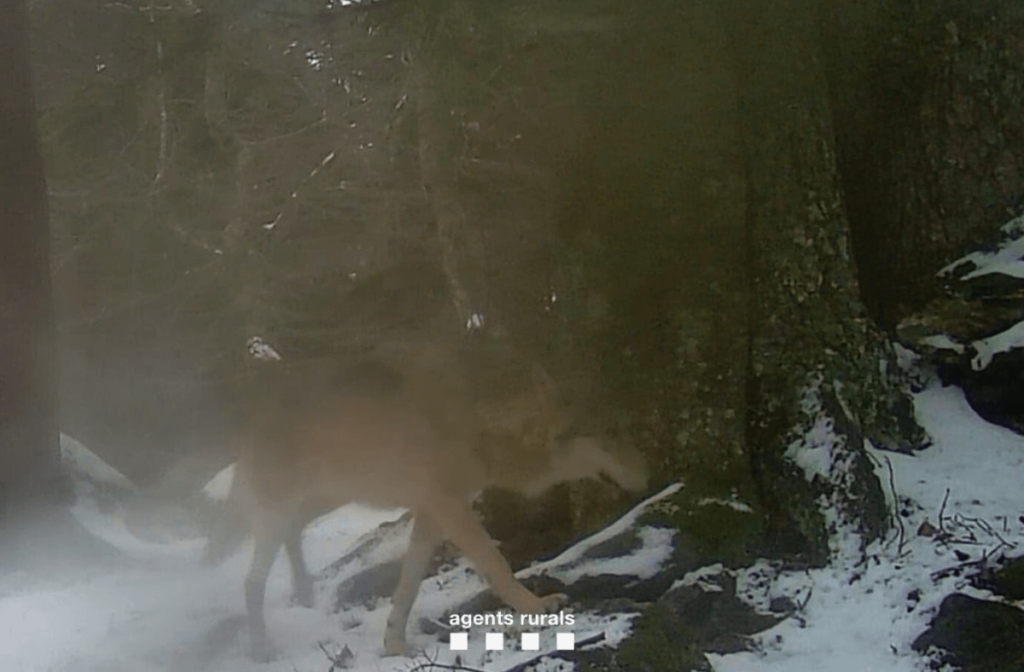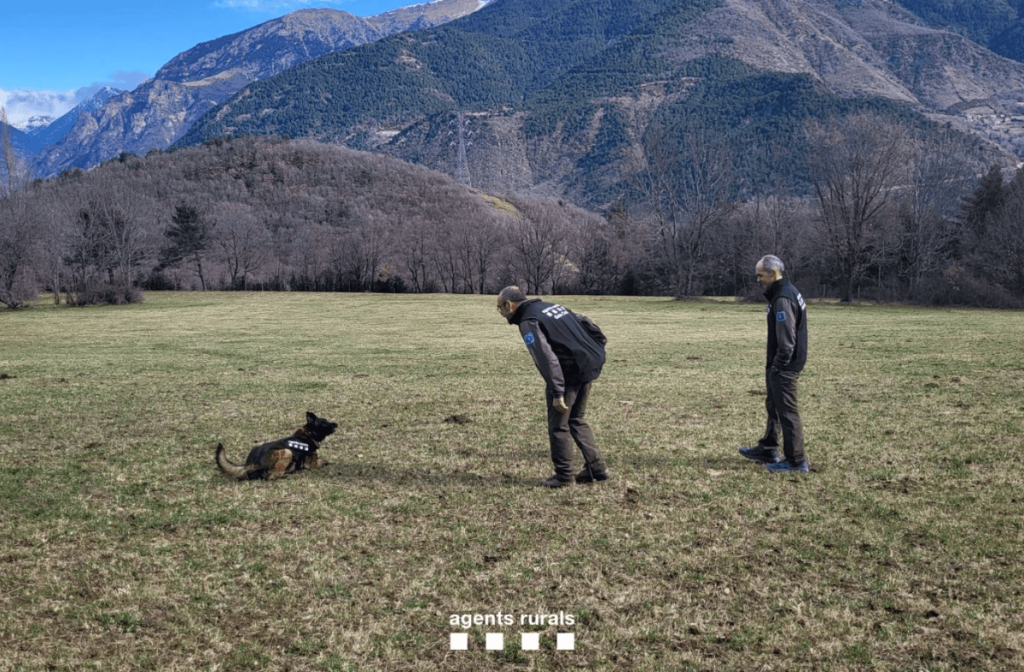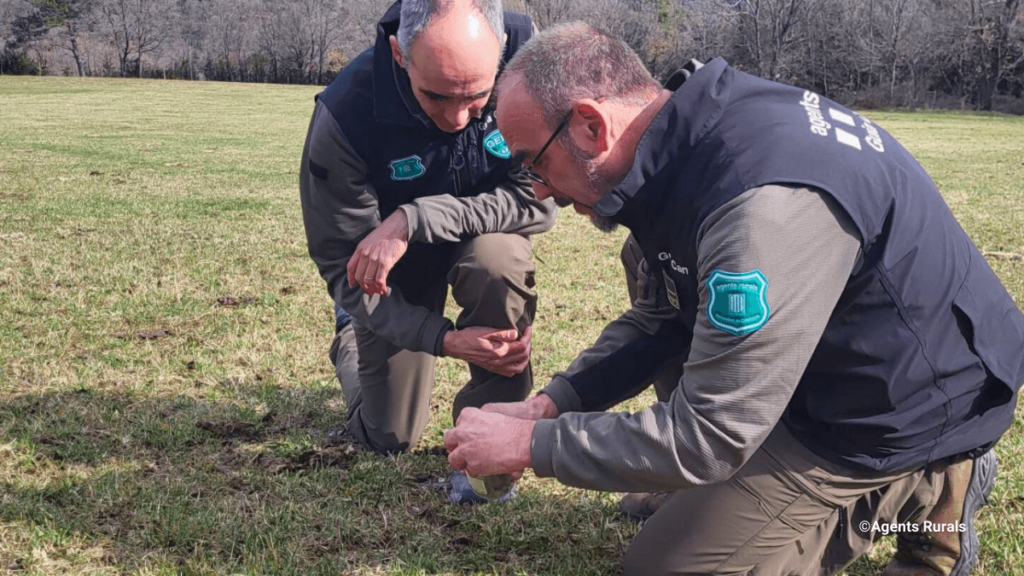It took quite a bit of detective work, close collaboration between experts of three countries, experience and a good deal of luck to turn the discovery by a team of rangers in Catalonia into the story of the most widely migrated wolf in Europe by aerial distance to date. Ranger Gabriel Lampreave, coordinator of bear and wolf monitoring of the Rural Agents Corps from Catalonia, explains how he and an international team reconstructed the journey of a male wolf from Northern Germany.
According to the German Documentation Centre for Wild Wolves (DBBW), this 1,190-kilometre aerial distance migration from Nordhorn, Germany, to the region of Lleida in Catalonia is the longest documented migration route of a wolf in Europe to date. But at the same time it’s just another example of the impressive distances wolves cover time and again. Aerial distances documented so far in Europe range from 1,092 kilometres between Norway and Finland (2007), 880 kilometres between Germany and Belarus in 2009 to 829 kilometres between Switzerland and Slovakia in the period from 2022 to 2023.

Gabriel, when and how was the wolf we are talking about first recorded in the Lleida region?
The excrement used to identify it was collected on 13 February 2023. But we already had the suspicion in the area at the end of 2022. The cameras we installed for our wolf monitoring in the area showed images that gave us the idea that two different animals might have moved through the area at the same time. It wasn’t clear, as most of the photos and videos were taken at night and always showed a single animal. But there were some aspects that led us to intensify the search in the area with the help of our special canine unit Grup Caní. In January it had snowed a little and we found no further signs. But on 13 February the snow had receded. At that moment, the dog I was leading found the droppings and marked them. They were still half covered in snow, and it was clear that they had occurred before the January precipitation that had covered them – at the end of December when we had our suspicions.
How did you find out that this is a wolf from the pack in Nordhorn, Germany?
I froze the wolf faeces according to the protocol established for these cases. We took it to the laboratory at the Autonomous University of Barcelona for analysis, together with other samples that we had collected from other places. The results showed a w1 haplotype. This gene composition is found in Central European wolves, but not in the Alpine lineage, which all wolves identified in Catalonia so far have. We were very surprised and the laboratory repeated the analysis to rule out errors. We then spoke to our colleagues at the OFB laboratory in Antagene, France, with whom we have been working for more than 20 years, to exchange the sample.
“The second surprise was a big one: The sample in question was known in the database of our partner laboratory in France. And not only that: The same applied to a German laboratory.”
Then came the second surprise, and it was a big one: the sample in question was known in their database. It was an animal that had been identified in northern France in 2022. And not only that: samples had also been exchanged with the neighbouring laboratory of the Senckenberg Institute in Germany, and the animal had also been documented twice in that country. The first documentation was considered the birth year of the animal, as it was the first time the group reproduced, and the second as the year after, just before the wolf started travelling. As a result, we identified this animal in 2020 in Germany, 2021 still in the same area, 2022 in Burgundy in France and 2023 in Vilaller in Lleida (Catalonia). To date, we have not found it again in any of the samples, so we don’t know where it is at the moment. Instead, we continue to discover the Italo-Alpine male, which we have had in the area since 2021, and at the moment it is genetically the only one that occurs here.

So the Catalan region has not yet been colonised by wolves?
We do not have a wolf population in Catalonia. Wolves disappeared at the beginning of the last century and the first wolves reappeared naturally in the early 2000s. We have had this trickle of dispersing animals, all of Italian-Alpine origin, for more than 20 years. In these years, we have genetically identified around twenty different animals, all males; we only discovered a female once in 2008. The start of a new population seems to be only a matter of time. All it needs is the arrival of a female.
What does the sighting of the wolf from Nordhorn, Germany, mean for you personally?
This news really fascinated me. It was like a journey of discovery, where we took small steps and each step was even more exciting than the last. When I took the sample, I thought it would come from the animal we had already identified in the area. After a few weeks, we analysed it and had our first surprise. After it travelled to the French laboratory, the result came from there came as the second surprise and later and finally the confirmation from Germany. So incredible!
“Good collaboration with our French colleagues was the key to reconstructing this wolf migration, along with a bit of luck and years of work. We have been very well rewarded!”
It also took a whole series of coincidences: The fact that this animal crossed an area we were already monitoring allowed us to spot it. If it had passed just a little further east, we would never have known about it. I must emphasise the cooperation and good work that we have had with our French colleagues for many years. That was undoubtedly also the key, without which we would probably never have got this far. It was the sum of all these factors: a bit of luck, a few coincidences and also a bit of all the work we’ve done over the years and connecting the dots to get to where we are now. We’ve been very well rewarded!
What I’m most interested in right now is where the wolf might be or what happened to him. Genetics has allowed us to understand this story without directly interfering with the animal in question, and this is undoubtedly a very powerful tool for non-invasive monitoring of species.
Have there been any reactions from the population to this record wolf migration?
We didn’t know the full extent of the news, and it wasn’t shared until almost a year after the events due to the complexity of its verification. Now we know nothing about this wolf, but it is clear that it was a widely discussed event when it became public. It’s a vivid example of how the wolves we have in our homeland today come and can come to us. An arrival that more sceptical sections of society sometimes find difficult to believe. Above all, however, it explains and illustrates very clearly the dispersal ability of wolves and their adaptability. Wolves are still capable of surprising us today. Those who try to track and follow them often find that the more we think we know, the more we realise that we know little or nothing at all.
editorial work for this
content is supported by


